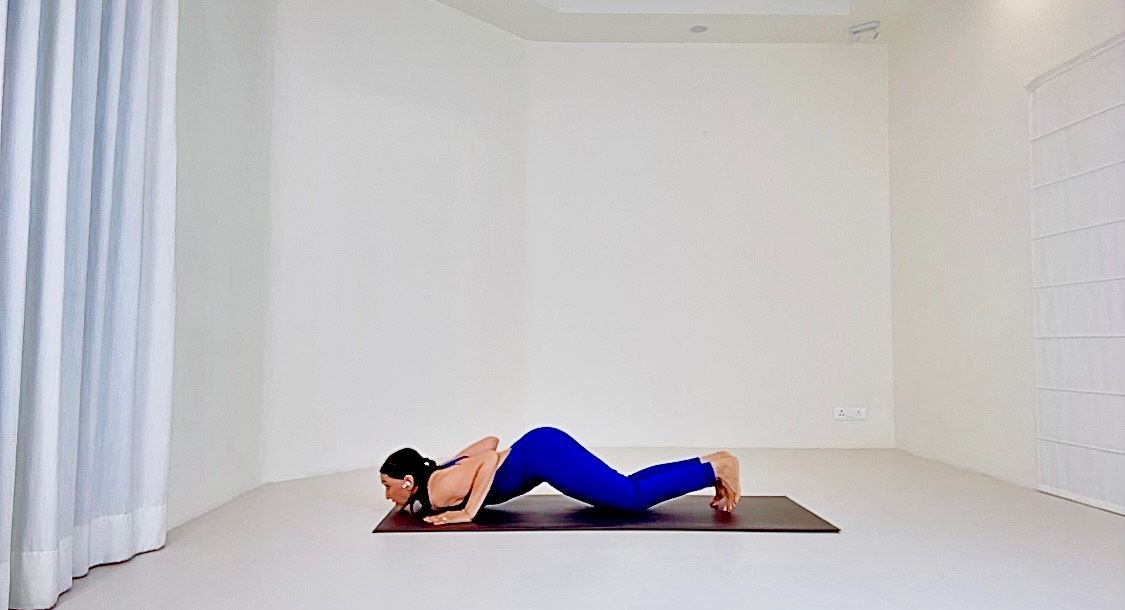The origin of the Surya Namaskar or Sun Salutation dates back to the Vedic period, over 3500 years ago.
Ancient civilizations, from the Greeks to the Egyptians considered the Sun to be the source of life. In Hinduism, ‘Surya’ is considered the source of life, light power, energy and spiritual enlightenment.
If we delve into the carvings on our ancient Konark Sun temple or study our scriptures, we will observe that in Indian mythology, Surya dev, the Sun God is depicted riding a chariot pulled by seven horses, symbolizing the seven meters of the Vedas. Some interpret the seven horses to also represent the seven colours of visible light, the seven days of the week and the 7 main chakras (energy centres)
Early Vedic hymns and chants were performed at sunrise to honour the Sun god and express gratitude for his life-sustaining energy.
The Evolution of Surya Namaskar
The original Surya Namaskar was not a series of yoga poses, instead a collection of sacred verses recited at sunrise by a Brahmin priest. This practice involved 132 passages and took over an hour to complete, culminating in a full prostration, facing the sun.
Some learned yogis of this time believed that performing Surya Namaskar embodied the very essence of the Gayatri Mantra, one of the oldest and most revered mantras. This practice honoured the earth, the heavens, and all forms of life.
Somewhere down the line, a flowing sequence of asanas was added. The chanting accompanied by the sequence of asanas was viewed as a comprehensive health exercise, enhancing strength, flexibility, and circulation, while also providing spiritual and psychological benefits.
Medieval Development - Integration into Yoga
By the medieval period, around the 12th century, the practice of Surya Namaskar had evolved significantly.
A decade later, the influential text “Surya Namaskara: A Technique of Solar Vitalization,” written by Swami Satyananda Saraswati (published 2002) suggested that the modern sequence of Surya Namaskar was formalized much earlier, integrating into Hatha Yoga traditions. The practice was not just a physical exercise but a holistic routine that incorporated breath control (pranayama), focus and meditation. Surya Namaskar became a complete sadhana (spiritual practice) aimed at the physical, mental, and spiritual upliftment of practitioners.
Modern Revival
In the 1920s, Raja of Aundh, Bhawanrao Shriniwasrao Pant Pratinidhi, played a crucial role in popularizing Surya Namaskar. He published a book detailing the practice, making it accessible to a broader audience. This marked the Beginning of Surya Namaskar’s journey from a spiritual practice to a global fitness phenomenon.
Surya Namaskar gained widespread recognition in the early 20th century, thanks to influential yoga gurus like Swami Sivananda and T. Krishnamacharya. They promoted this practice as a comprehensive workout that benefits the entire body. Krishnamacharya, often considered the father of modern yoga, emphasized the importance of synchronized breathing with each movement.
Krishnamacharya’s two prominent students, BKS Iyengar and Patabhai Jobs, further popularised the Sun Salutation practice, albeit taught a modified version of it in their own style.
Every yoga school since then included the Surya Namaskar in their practice, either teaching the traditional version or making some modifications of their own. Modern teachers today do try and retain the full essence and depth of the Sun Salutation as they teach it to their students.
Take that step to reap the Benefits of the Sun Salutation and Practice Surya Namaskar the right way. Do opt for Online Yoga Sessions with YogawithSapna today.
